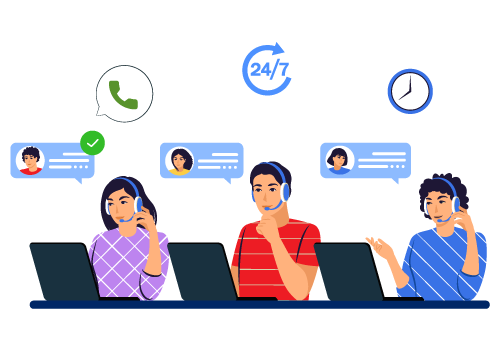Senior Writer: Paras Kela
Managing a call center effectively is essential for delivering exceptional customer service and achieving organizational goals. A call center is a centralized hub where customer interactions are handled, ranging from answering inquiries and resolving issues to conducting sales and surveys. In fact, omnichannel self-service will soon be a priority for the future of call centers. 40% of organizations have increased their use of self-service IVR software.
Successful call center management requires a combination of effective strategies, skilled personnel, streamlined processes, and appropriate technologies. By implementing call center management best practices and understanding the different levels of management and types of call centers, organizations can optimize their call center operations and create positive customer experiences.
For effective call center management, every organization needs to adopt the right technology and leverage it for better customer interaction. Closely monitoring call center progress and interactions can enable companies and their team to increase their customer base.
What is Call Center Management?
Call center management involves overseeing and directing the operations of a facility where representatives handle telephone calls for a company, aiming to ensure efficient customer interactions and meet organizational goals. Responsibilities include staffing, training, monitoring performance, managing workflow, planning resources, utilizing technology, ensuring quality, and enhancing the customer experience.
Roles and Responsibilities of Call Center Team
In a call center, there are various roles and responsibilities that contribute to the smooth functioning of operations and the delivery of exceptional customer service.
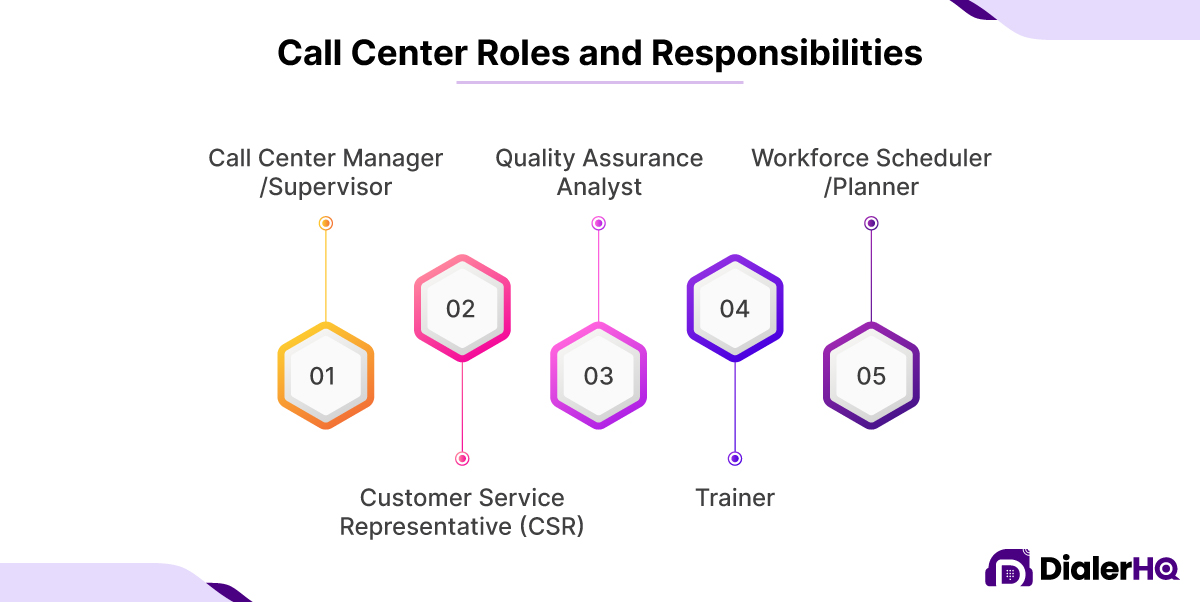
Let’s delve into some of the key roles and their respective responsibilities:
1. Call Center Manager/Supervisor
Below are the main roles and responsibilities of a call center manager or a supervisor :
- Overseeing the overall operations of the call center.
- Setting performance goals and targets for the team.
- Monitoring call center metrics and performance indicators.
- Developing and implementing strategies to improve efficiency and productivity.
- Providing coaching and feedback to call center agent to enhance their performance.
- Handling escalated customer complaints or complex issues.
- Ensuring adherence to company policies and procedures.
- Conducting regular performance evaluations and appraisals.
2. Customer Service Representative (CSR)
If you’re a CSR and wondering how to manage the call center, below are the main responsibilities:
- Handling incoming customer calls and providing assistance.
- Addressing customer inquiries, concerns, and complaints.
- Resolving customer issues and ensuring customer satisfaction.
- Providing product or service information to customers.
- Processing orders, returns, or exchanges as required.
- Following call scripts and maintaining a professional tone.
- Escalating complex or unresolved issues to supervisors or specialized teams.
- Documenting customer interactions accurately in the system.
3. Quality Assurance Analyst
Even QA analyst have to closely work in a call center, as shown below:
- Monitoring and evaluating the quality of customer interactions.
- Conducting call evaluations and assessments for adherence to quality standards.
- Providing feedback to CSRs to improve their performance.
- Developing and implementing quality assurance processes and guidelines.
- Identifying training needs and collaborating with trainers to address them.
- Analyzing data and generating reports on quality metrics.
- Suggesting and implementing improvements to enhance overall service quality.
4. Trainer
Call center trainer has many important responsibilities, including:
- Developing training programs for new hires and existing CSRs.
- Conducting training sessions on products, services, and call handling techniques.
- Providing ongoing coaching and development to improve CSR skills.
- Assessing training needs and designing appropriate learning materials.
- Keeping up-to-date with industry trends and customer service best practices.
- Collaborating with other teams to address specific training requirements.
- Monitoring the progress of trainees and providing constructive feedback.
5. Workforce Scheduler/Planner
Workforce planner can effectively improve their performance by looking over these aspects:
- Forecasting call volumes based on historical data and trends.
- Creating and managing agent schedules to meet expected call volumes.
- Optimizing staff allocation to ensure efficient coverage during peak times.
- Managing time-off requests and scheduling adjustments.
- Monitoring adherence to schedules and making real-time adjustments as needed.
- Analyzing workforce data to identify staffing gaps and recommend solutions.
- Collaborating with managers and supervisors to optimize workforce planning.
These are just a few of the roles and responsibilities within a call center. The specific structure and responsibilities may vary depending on the size and nature of the call center, as well as the industry in which it operates. Effective coordination among these roles ensures a well-managed call center that delivers excellent customer service.
How does a Call Center Work?
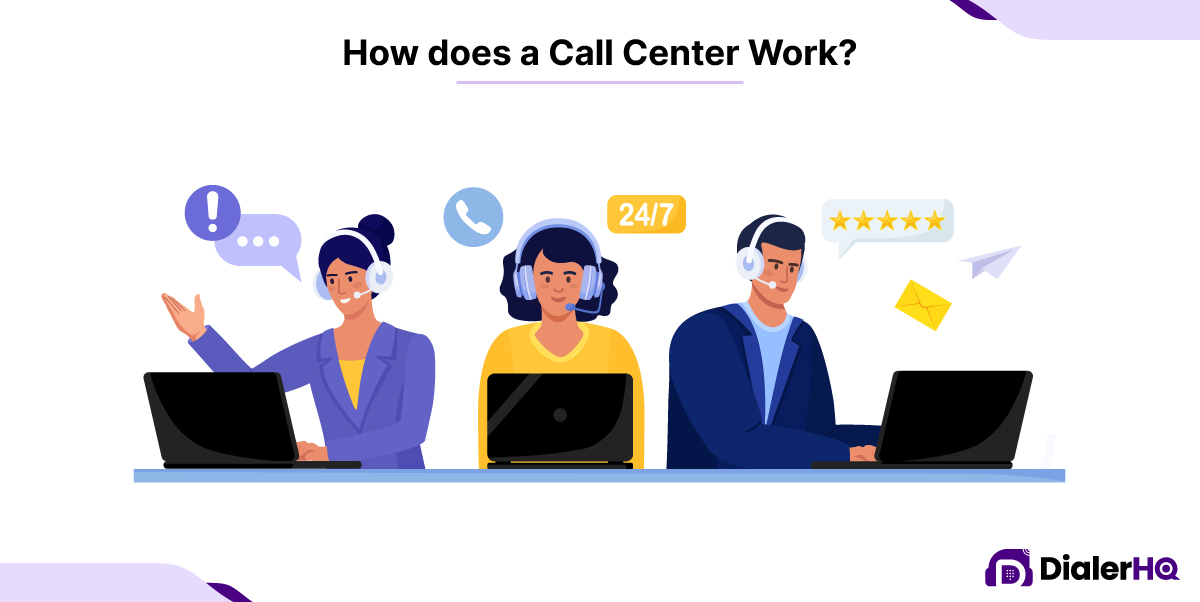
A call center operates by handling incoming and outgoing customer interactions through telephone, email, chat, or other communication channels. The process begins with customers reaching out to the call center for assistance or inquiries. Incoming calls are routed through an Automatic Call Distribution (ACD) system, which distributes them to available customer service representatives (CSRs) based on predefined criteria.
CSRs handle the incoming calls, following call scripts or guidelines to provide assistance, address inquiries, or resolve issues. They may access customer data through CRM systems to personalize interactions. Call center technology, such as call management systems and CRM software, assists in managing call queues, routing calls, and storing customer information.
Supervisors monitor and implement call center performance management in real-time and generate reports based on key metrics like average handling time, service level adherence, and customer satisfaction. Training programs, coaching, and continuous improvement initiatives help enhance CSR skills and optimize processes. Through effective management of these components, call centers strive to deliver efficient and satisfactory customer service.
What Makes a Successful Call Center?
Several factors contribute to the success of a call center. Here are some key elements that make a call center successful:
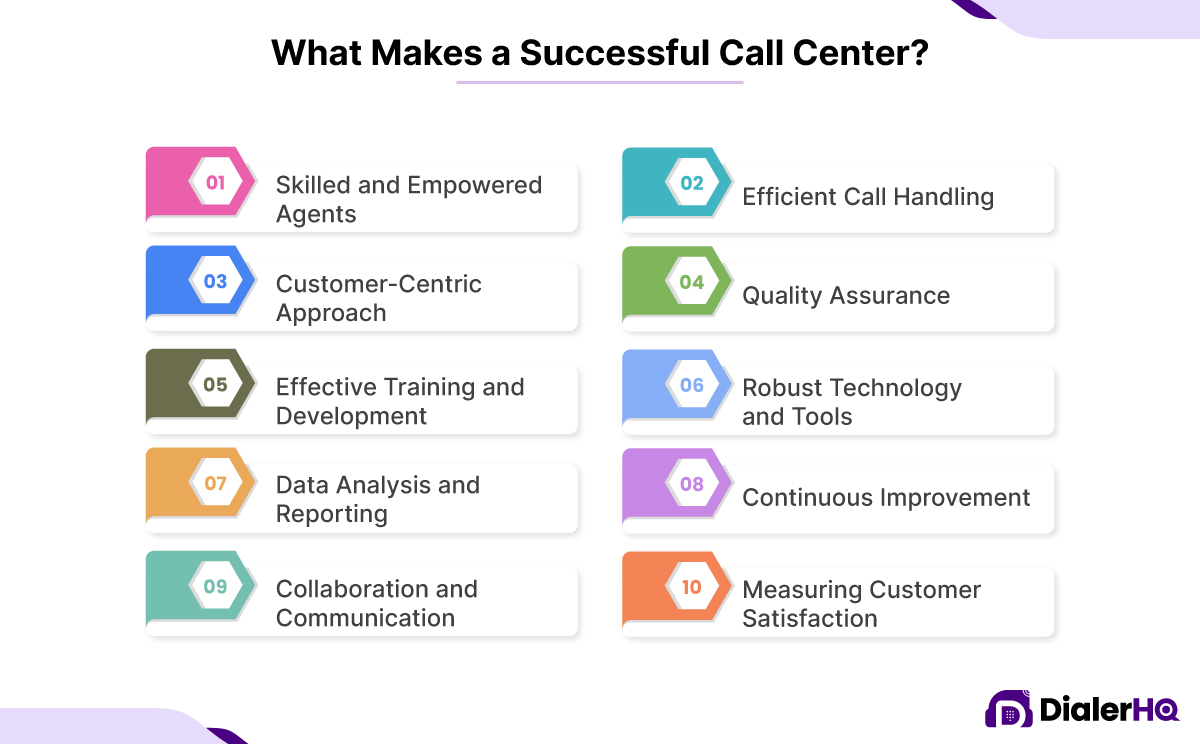
1. Skilled and Empowered Agents
Successful call centers have well-trained and skilled customer service representatives (CSRs). These agents possess excellent communication skills, product knowledge, and problem-solving abilities. They are empowered to make decisions and resolve customer issues effectively, resulting in positive customer experiences.
2. Efficient Call Handling
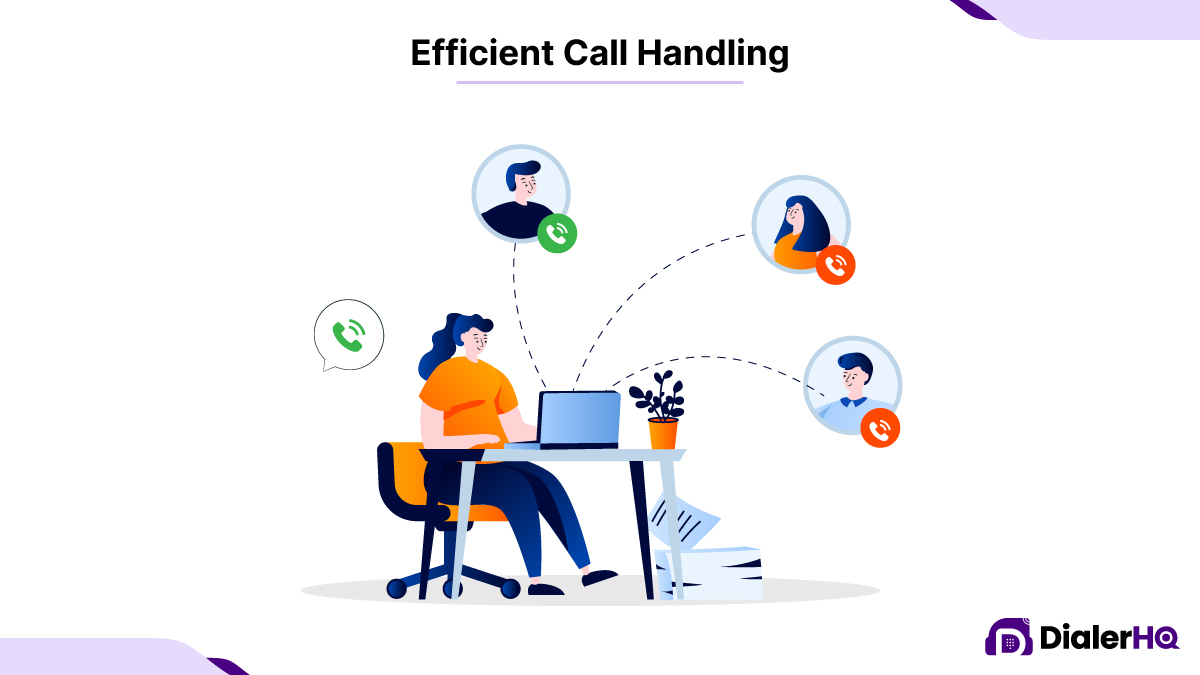
A successful call center efficiently manages call volumes and reduces customer wait times. This includes effective call routing, proper staffing levels, and optimized workflows. Technologies like automatic call distribution (ACD) systems, interactive voice response (IVR), and workforce management tools help streamline call handling processes.
3. Customer – Centric Approach
A customer-centric approach is vital for call center success. Agents should prioritize customer satisfaction by actively listening, empathizing, and providing personalized assistance. Understanding customer needs, preferences, and pain points enables agents to deliver a superior customer experience.
4. Quality Assurance
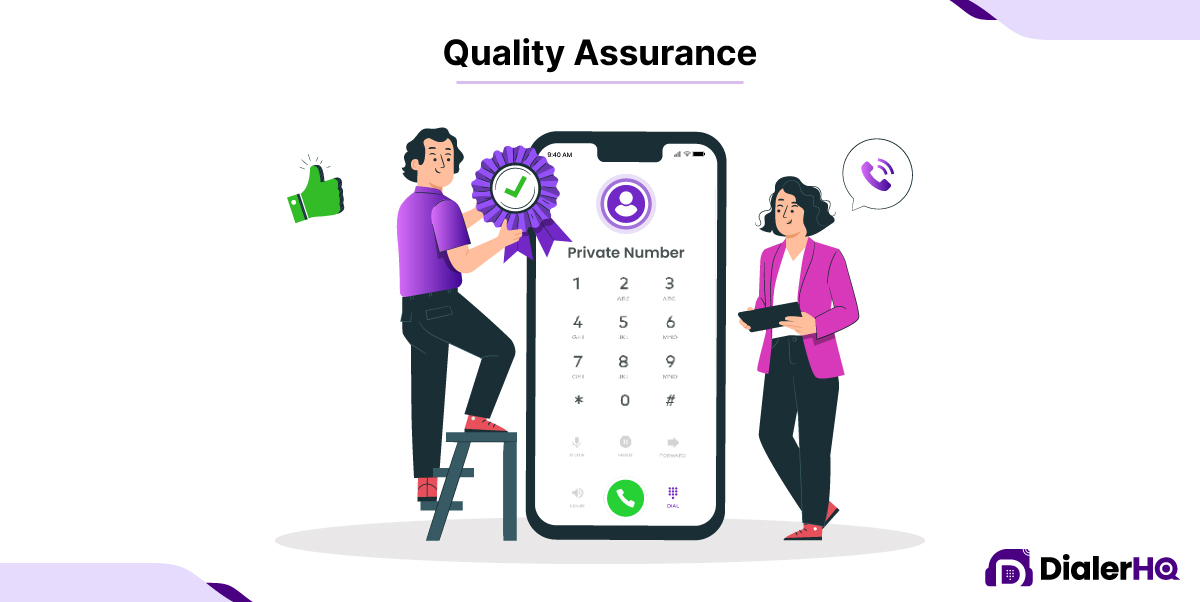
Successful call centers emphasize quality assurance practices. Regular monitoring and evaluation of customer interactions ensure adherence to service standards, call scripts, and quality metrics. Feedback and coaching sessions help agents improve their performance and deliver consistent service excellence.
5. Effective Training and Development
Continuous training and development programs enhance the skills and knowledge of call center agents. Training should cover product knowledge, customer service techniques, effective communication, and problem-solving. Ongoing coaching and opportunities for professional growth contribute to the success of individual agents and the call center as a whole.
6. Robust Technology and Tools
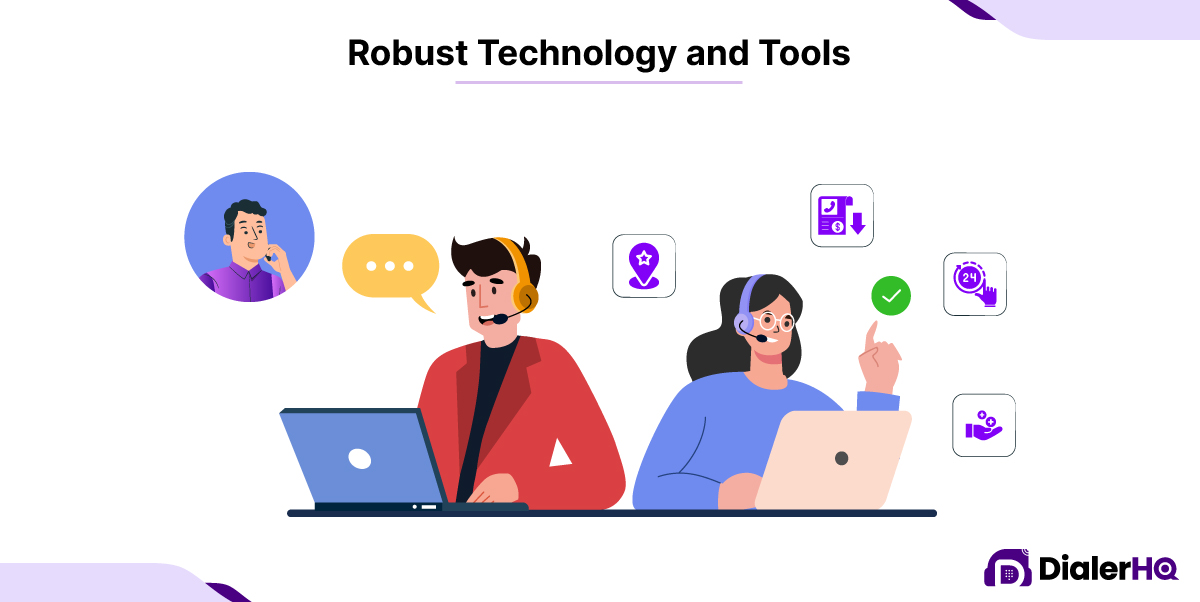
Call centers rely on technology to optimize operations. An efficient call center utilizes reliable and user-friendly call center workforce management software, recruitment automation software, knowledge bases, and reporting tools. These tools enhance agent productivity, enable efficient call routing, and provide access to relevant customer information.
7. Data Analysis and Reporting
Successful call centers leverage data analysis and reporting to gain insights into call center performance. Monitoring key metrics such as average handling time, first call resolution, customer satisfaction, and call abandonment rates allows for identifying trends, areas for improvement, and making data-driven decisions to optimize operations.
8. Continuous Improvement
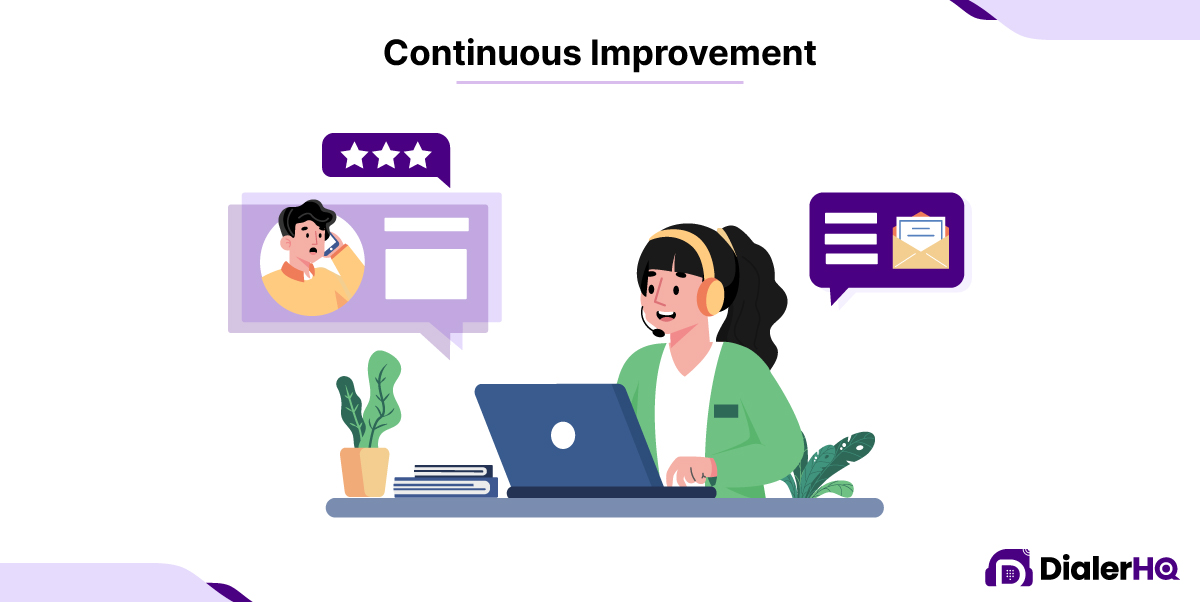
A successful call center fosters a culture of continuous improvement. Regular feedback from customers, agent input, and data analysis help identify areas where processes can be enhanced. The contact center management team actively seeks opportunities to streamline operations, improve customer experience, and achieve better outcomes.
9. Collaboration and Communication
Effective collaboration and communication between agents, supervisors, and other departments are essential for call center success. Regular team meetings, open lines of communication, and cross-functional collaboration enable knowledge sharing, problem-solving, and a unified approach to addressing customer needs.
10. Measuring Customer Satisfaction
A successful call center places a strong emphasis on measuring customer satisfaction. Surveys, customer feedback mechanisms, and post-call surveys help gauge customer sentiment, identify areas for improvement, and measure the effectiveness of customer interactions.
By focusing on these elements, call centers can create an environment that fosters agent productivity, delivers exceptional customer experiences, and achieves organizational goals.
How to Effectively Manage a Call Center?
Effectively managing a call center requires attention to various key areas. Here are some essential strategies and practices to effectively manage a call center:

1. Set Clear Goals and Expectations
Establish clear performance goals and expectations for the call center. Communicate these objectives to the team and ensure alignment with the organization’s overall objectives. This provides a clear direction for agents and helps measure success.
2. Hire and Train the Right People
Recruit and select customer service representatives (CSRs) who possess the necessary skills, including excellent communication, problem-solving, and empathy. Provide comprehensive training programs to equip agents with product knowledge, customer service techniques, and call handling skills. You can also use recruitment CRM software to streamline the hiring process and track candidate progress.
3. Implement Performance Monitoring and Feedback Mechanisms
Regularly monitor and evaluate call center performance using key performance indicators (KPIs) such as average handling time, first call resolution, customer satisfaction, and agent productivity. Provide timely and constructive feedback to agents, recognizing achievements and identifying areas for improvement.
4. Optimize Call Routing and Queuing
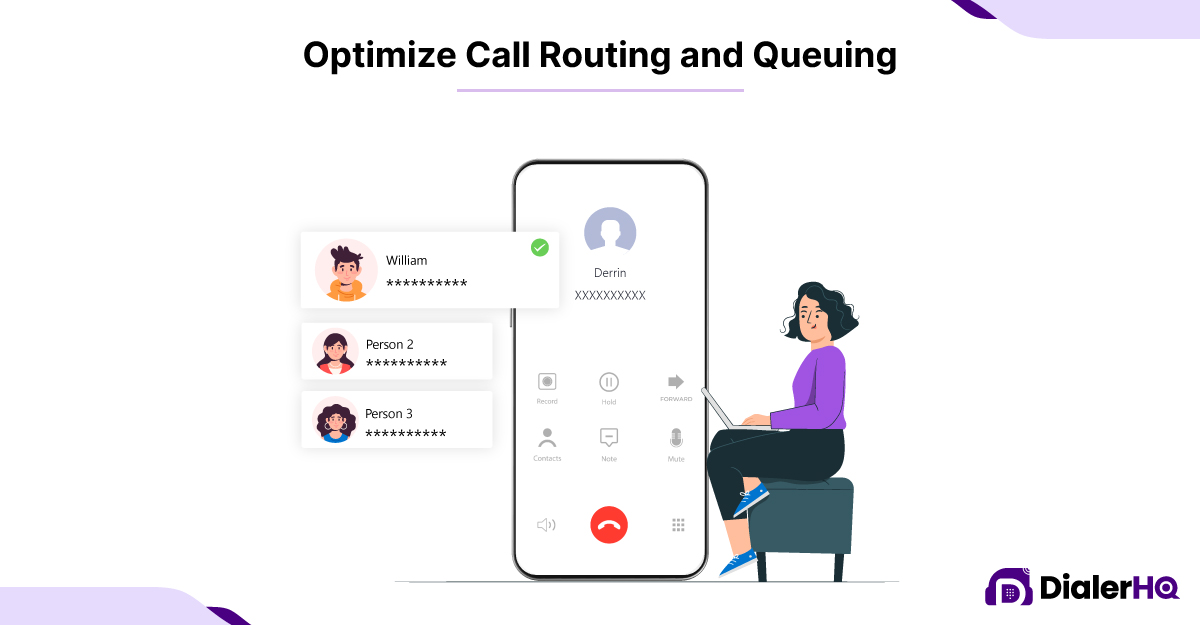
Implement efficient call routing strategies using automatic call distribution (ACD) systems to ensure calls are directed to the most appropriate agent based on skills, availability, and workload. Minimize customer wait times by optimizing call queues and ensuring an adequate number of agents are available during peak hours.
5. Leverage Technology and Tools
Invest in robust call center technologies and tools such as customer relationship management (CRM) systems, call recording and monitoring software, call center software, workforce management solutions, and reporting analytics. These tools enhance productivity, provide real-time insights, and enable effective resource planning.
6. Foster a Positive Work Environment
Create a positive work environment that promotes collaboration, teamwork, and employee engagement. Offer opportunities for skill development, recognize and reward achievements, and encourage open communication and feedback. A supportive work environment contributes to agent satisfaction and improved customer interactions.
7. Continuously Improve Processes
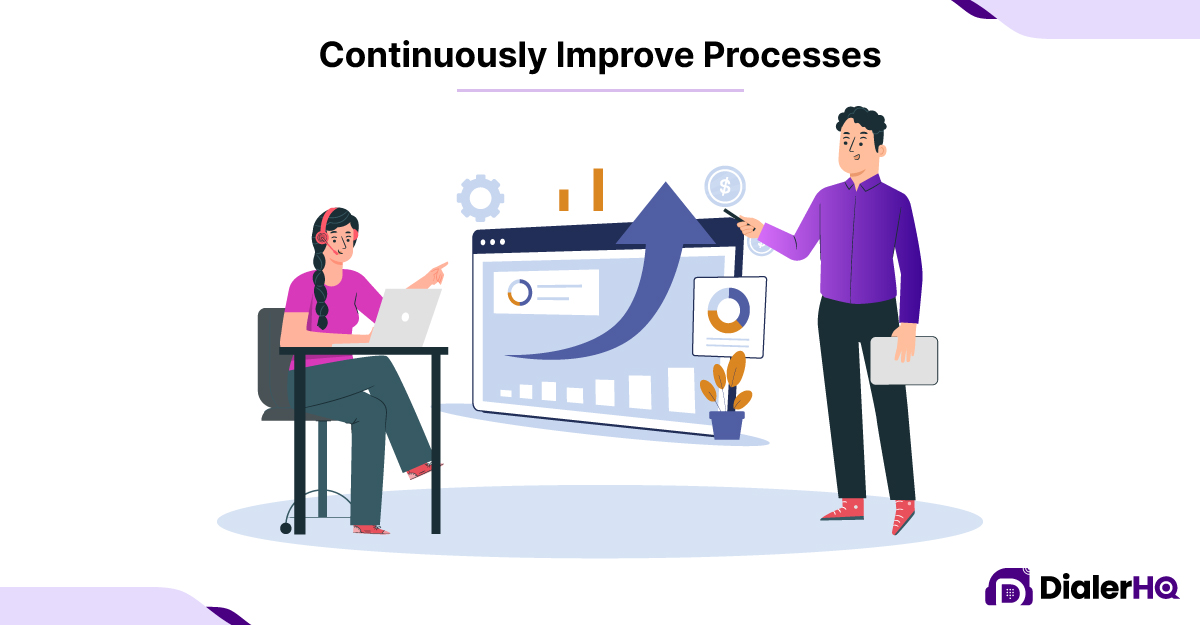
Regularly evaluate and improve call center processes. Analyze customer feedback, agent suggestions, and performance data to identify areas for enhancement. Streamline workflows, optimize scripts, and implement best practices to drive efficiency and improve customer experience.
8. Provide Ongoing Training and Development
Offer ongoing training and development opportunities to agents to enhance their skills and knowledge. Provide coaching, workshops, and access to resources that help agents stay updated on product updates, industry trends, and customer service techniques. Continuously invest in agent growth and improvement.
9. Implement Quality Assurance Programs
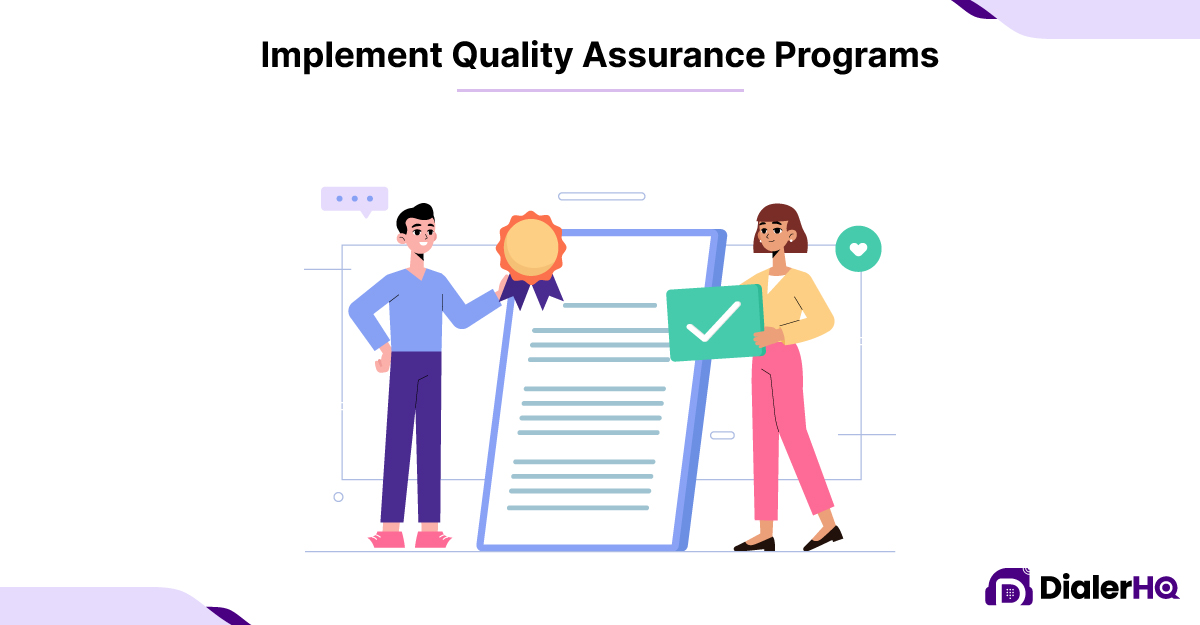
Develop quality assurance programs to ensure consistent service delivery. Monitor and evaluate customer interactions, conduct call audits, and provide feedback to agents to maintain quality standards. Regularly review and refine quality assurance processes based on customer feedback and performance data.
10. Monitor Customer Feedback
Actively seek and analyze customer feedback through surveys, post-call surveys, and customer reviews. Use this feedback to identify trends, address concerns, and make necessary improvements. Understand customer expectations and make adjustments to deliver exceptional customer experiences.
By implementing these strategies and practices, call center managers can effectively manage their teams, improve operational efficiency, and provide outstanding customer service.
How to Improve Call Center Customer Satisfaction Rates?
Improving call center customer satisfaction rates is crucial for creating positive customer experiences and building customer loyalty. Here are several strategies that can help enhance customer satisfaction in a call center –
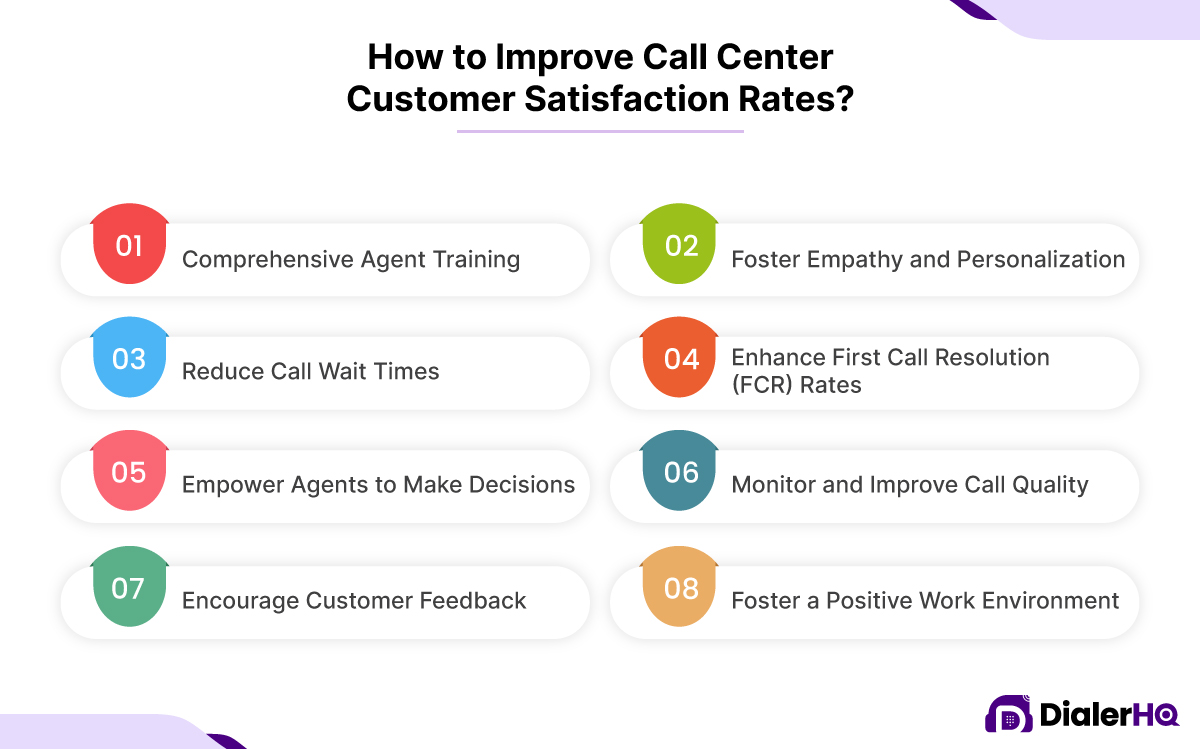
1. Comprehensive Agent Training
Invest in thorough and ongoing training programs for call center agents. Ensure they are equipped with product knowledge, effective communication skills, active listening techniques, and problem-solving abilities. Well-trained agents can provide accurate information and address customer needs more efficiently.
2. Foster Empathy and Personalization
Encourage agents to empathize with customers and create personalized interactions. Train them to understand customer emotions, actively listen to their concerns, and provide tailored solutions. Customers appreciate feeling understood and valued as individuals.
3. Reduce Call Wait Times
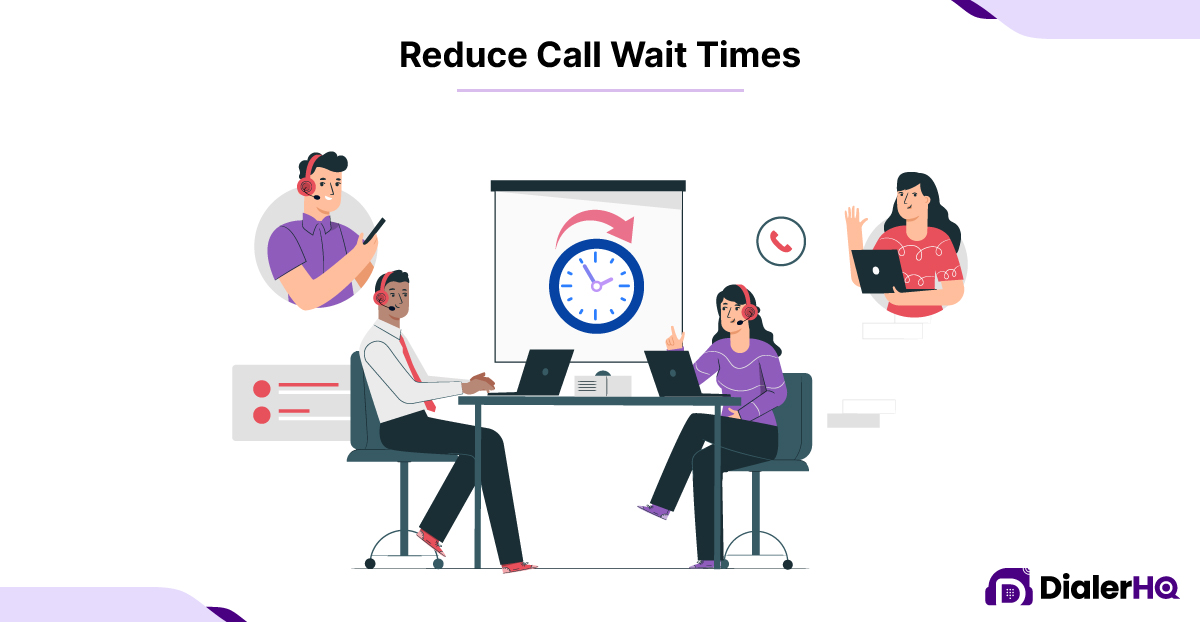
Minimize customer wait times by optimizing call routing, staffing levels, and scheduling. Implement technologies like automatic call distribution (ACD) and interactive voice response (IVR) systems to efficiently route calls and provide self-service options. Shorter wait times lead to increased customer satisfaction.
4. Enhance First Call Resolution (FCR) Rates
Aim to resolve customer issues during the initial interaction. Provide agents with comprehensive resources, tools, and authority to address a wide range of customer concerns. Minimizing the need for customers to make multiple contacts for the same issue improves satisfaction.
5. Empower Agents to Make Decisions
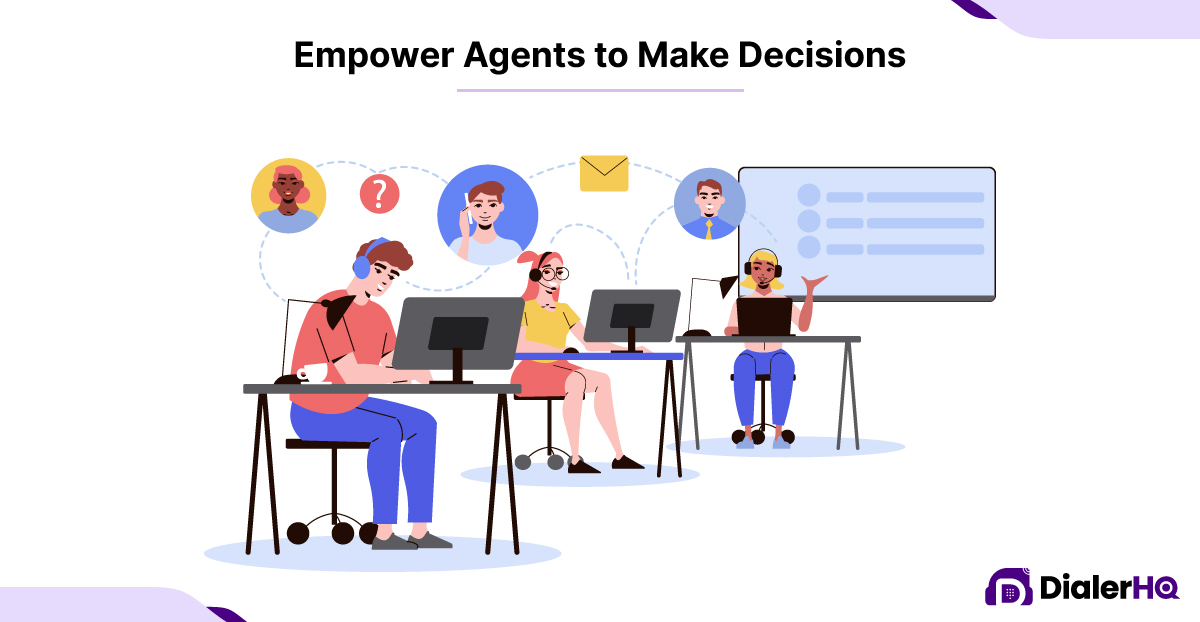
Grant agents the authority to make certain decisions and resolve customer issues independently. Empowered agents feel more ownership and responsibility, leading to quicker issue resolution and increased customer satisfaction.
6. Monitor and Improve Call Quality
Implement quality assurance programs to monitor and evaluate customer interactions. Regularly review call recordings, conduct evaluations, and provide constructive feedback to agents. Focus on aspects like professionalism, accuracy, and adherence to call scripts to improve the overall quality of customer interactions.
7. Encourage Customer Feedback

Actively seek customer feedback through post-call surveys, online reviews, and customer satisfaction surveys. Analyze feedback to identify areas for improvement and address any recurring issues. Demonstrating a commitment to listening and acting on customer feedback helps boost satisfaction.
8. Foster a Positive Work Environment
Create a supportive and positive work environment for agents. Recognize their efforts, provide opportunities for growth, and encourage collaboration and teamwork. Happy and engaged agents are more likely to provide exceptional service, leading to higher customer satisfaction.
Final Thoughts
In conclusion, improving call center customer satisfaction rates is a multifaceted endeavor that requires a comprehensive approach. By investing in agent training, fostering empathy and personalization, and reducing wait times, call centers can significantly enhance customer satisfaction levels.
Prioritizing customer-centric strategies and consistently striving for excellence in service delivery will result in happier customers and foster long-term loyalty and positive brand perception. With a commitment to continuous improvement and a customer-centric mindset, call centers can successfully elevate customer satisfaction and create exceptional customer experiences.
FAQs
The best way to manage a call center is by setting clear goals, hiring and training skilled agents, implementing efficient call handling processes, leveraging technology and tools, monitoring performance, providing ongoing training and feedback, and continuously improving processes based on customer feedback and data analysis.
The levels of management in a call center typically include front-line supervisors, middle managers or team leaders, and senior management or executives overseeing the entire call center operation. Front-line supervisors directly supervise and support agents, middle managers handle team performance and operational aspects, while senior management sets strategic goals and manages the overall call center performance.
The three types of call centers are inbound call centers, outbound call centers, and blended call centers. Inbound call centers primarily handle incoming customer calls, inquiries, and support requests. Outbound call centers focus on making outgoing calls for sales, telemarketing, or customer surveys. Blended call centers handle both inbound and outbound calls, allowing agents to handle a mix of incoming and outgoing interactions.

Paras Kela is an accomplished IT professional with 7+ years of industry experience, including 4+ years as a dedicated content writer. His expertise lies in crafting informative blogs on VoIP and cloud telephony, among other technical subjects. Outside his professional pursuits, he cherishes quality time with loved ones, indulges in watching documentaries, and finds solace in gardening.
Updated : November 27, 2024

Subscribe to our newsletter & never miss our latest news and promotions.
